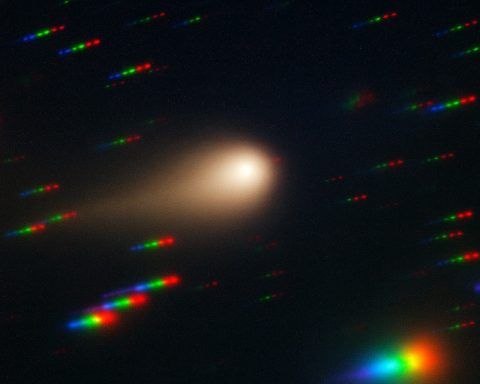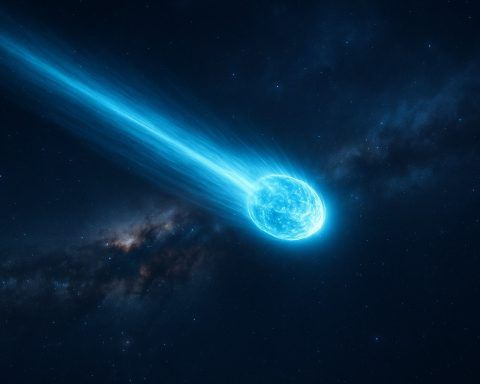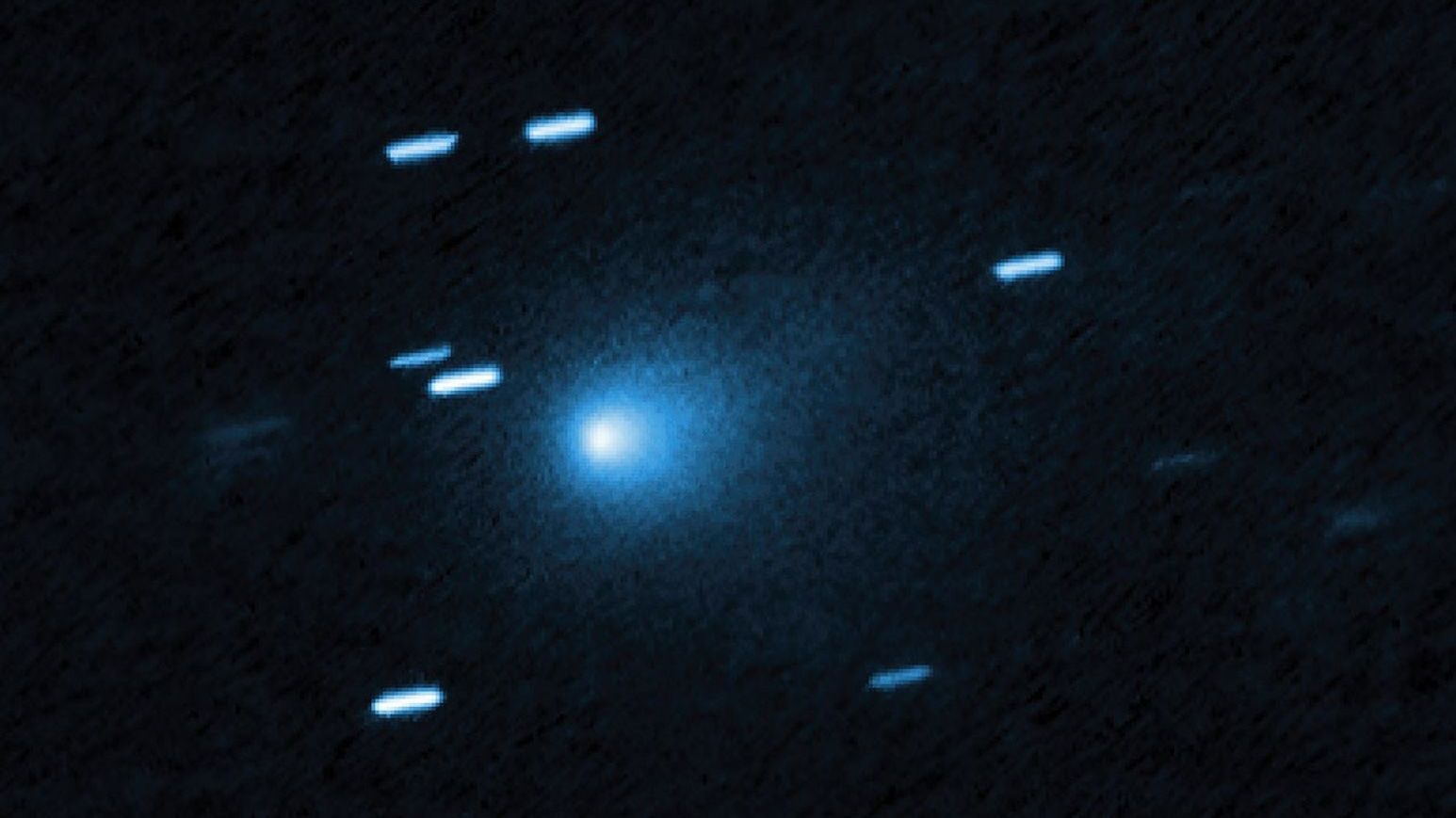- Biggest full moon of 2025: November’s “Beaver Moon” will be a supermoon – the largest, brightest full moon of the year. It turns officially full on Wednesday, Nov. 5, 2025 (8:19 a.m. ET) [1], and will shine about 14% bigger and 30% brighter than the dimmest full moon of the year [2].
- Dazzling close approach: At its nearest, the Beaver Moon comes ~221,800 miles (~357,000 km) from Earth – the closest any full moon gets in 2025 [3]. In fact, this is the closest full moon since February 2019 [4], making it an exceptionally brilliant lunar show.
- When to see it: The supermoon will rise in the east around sunset on Nov. 4–5 and appear full on the nights of Nov. 4, 5, and even Nov. 6 [5] [6]. For the most dramatic view, look for the moon just after it rises above the horizon – its low-angle glow can appear large and golden, a phenomenon known as the “moon illusion.”
- One of three supermoons: This Beaver Moon is the second of three consecutive supermoons closing out 2025 [7] [8]. It follows October’s full Harvest Moon (also a supermoon) and precedes December’s full Cold Moon, which will be the last supermoon of the year [9]. November’s will be the closest and brightest of the trio.
- Origin of the name: The November full moon is traditionally called the “Beaver Moon” in North America, as it marked the time when beavers build their winter dams and trappers set beaver traps before the waters froze [10] [11]. It’s also known by other folk names like the Frost Moon or Mourning Moon, reflecting late autumn’s onset of winter [12].
- Expert insights: Astronomers note that while this supermoon’s extra gravity can cause slightly higher tides, the change “isn’t very noticeable” to the public [13]. Likewise, the apparent size boost of a supermoon is subtle – “most obvious as a comparison” only when you contrast photos or observations side by side, explains Shannon Schmoll, director of Michigan State’s Abrams Planetarium [14].
The Brightest Supermoon of 2025 Is Here
Skywatchers are in for a treat as the year’s brightest full moon takes to the sky this week. November’s full moon – known as the Beaver Moon – will reach its peak illumination on the morning of November 5, 2025, and it’s no ordinary full moon. It’s a “supermoon”, meaning the moon is near its closest point to Earth in its orbit during its full phase. This makes the lunar disc appear a bit larger and a lot more luminous than usual. In fact, this Beaver Moon supermoon will be so luminous that its glow can even cast faint shadows on the ground at night, a rare effect only seen during the most intense full moons [15].
As the moon turns full at 8:19 a.m. ET on Nov. 5 [16], it will also be making its closest approach to Earth for the year. At roughly 221,800 miles away (about 356,980 km) at nearest approach, this is the closest any full moon comes in 2025 [17], earning the “super” title. For context, that distance is thousands of miles nearer than a typical full moon. It’s the closest full moon our planet has seen in over six years – not since February 2019 has the Moon come so near in its full phase [18]. The result is the biggest apparent moon of the year 2025. The moon’s enhanced proximity will make it about 14% larger in diameter and 30% brighter in the sky than the faintest full moon of the year (which occurs when the moon is at its farthest, or apogee) [19]. In practical terms, most casual observers may not notice a huge size difference, but the extra brightness will be unmistakable on a clear night. In fact, National Geographic reports the moonlight will be intense enough to wash out fainter stars and even cast subtle shadows, creating an unusually brilliant nightscape [20].
Why This Full Moon Is Special
This November full moon stands out not just for its brightness, but also because it’s part of a rare consecutive supermoon trio. It is the second of three back-to-back supermoons closing out the year 2025 [21]. The previous full moon in October (often called the Harvest Moon) was also a supermoon, and the upcoming full moon in December (the Cold Moon) will be one as well [22]. However, November’s Beaver Moon is the closest and brightest among these. Astronomers note that of the three, the Beaver Moon comes nearest to Earth – at about 221,817 miles – slightly closer than December’s supermoon (~221,965 miles) and significantly closer than October’s (~224,600 miles) [23]. That’s why November’s will outshine the others. (For comparison, October’s supermoon was a bit farther out, which made it a touch smaller and dimmer than November’s). Impressively, after this sequence, the moon won’t appear this large and bright again until late 2026 – specifically in November 2026, when another Beaver Moon will reach a similarly close perigee [24].
So what exactly makes a “supermoon” super? The term refers to a new or full moon that occurs when the moon is at or near its perigee, the closest point in its elliptical orbit around Earth. Because the Moon’s orbit isn’t a perfect circle, at perigee it might be around 30,000 miles closer to us than at apogee (the farthest point) [25]. When a full moon coincides with this perigee position, the moon appears enlarged and brightened. NASA notes that a perigee full moon can look up to 14% larger and 30% brighter than a full moon at apogee [26]. This boost is real, but it can be hard to notice with the naked eye since there’s no immediate reference for comparison in the sky. “The change in the moon’s size can be tough to discern with the naked eye,” especially without a direct side-by-side comparison, experts explain [27]. “The difference is most obvious as a comparison between other images or observations,” says Shannon Schmoll, director of the Abrams Planetarium at Michigan State University [28]. In other words, if you looked at two photos of the Moon – one during a supermoon and one during a regular full moon – you could spot the size difference. But looking up on the night itself, the supermoon won’t appear gigantic – just a bit more radiant and slightly larger than usual.
Apart from size and brightness, a supermoon’s closer proximity has some subtle effects on Earth. One noticeable effect is on ocean tides: the moon’s extra gravitational pull can lead to higher high tides (often called “king tides”) than normal. However, the difference is modest. “Tides may be slightly higher during a supermoon because the moon is closer to Earth,” explained astronomer Lawrence Wasserman of Lowell Observatory, “but the difference isn’t very noticeable” to most people [29]. In short, you might see a bit more water on the shore, but nothing dramatically outside the usual tidal range.
The Beaver Moon: Name and Cultural Significance
November’s full moon carries the curious name “Beaver Moon,” a term rooted in seasonal folklore. The name is often attributed to Native American and colonial traditions in North America. According to the Old Farmer’s Almanac, which popularized many full moon names, the Beaver Moon signaled the time of year when beavers finished preparing for winter [30]. By November, beavers are busy building their lodges and dams and stashing food, ready to hunker down for the cold season. This was also historically the period when fur trappers would set out beaver traps before swamps and rivers froze, to secure warm pelts for winter [31] [32]. Thus, the full moon lighting up the late autumn sky became associated with those industrious beavers and the fur trade.
The Beaver Moon isn’t the only evocative name for November’s full moon. Different cultures and regions have had their own names reflecting nature’s rhythms at this time of year. For instance, it’s sometimes called the Frost Moon or Freezing Moon, marking the hard frosts as winter approaches [33]. Some Algonquian-speaking peoples referred to it as the Trading Moon or Mourning Moon, and others as the Digging or Scratching Moon – perhaps noting animals digging for food as winter nears [34]. In the Anishinaabe (Ojibwe) tradition, November’s moon is Baashkaakodin Giizis, meaning “Freezing Moon” [35]. All these names paint a picture of a transitional season: animals caching food, the first freeze of the year, and humans preparing for the harsh months ahead. The enduring name “Beaver Moon” captures one vivid slice of that seasonal change, immortalizing the beaver’s role in the ecosystem and economy of centuries past.
How to See the Beaver Supermoon
Viewing this Beaver supermoon requires no special equipment – just clear skies and a sense of wonder. If weather permits, simply head outdoors around moonrise or moonset for the most scenic experience. On Wednesday, Nov. 5, the moon will rise around local sunset time, glowing huge and amber-hued near the horizon. (Moonrise time on any date depends on your location, but around the full moon it’s generally near dusk. Check a local moonrise calendar to time it [36].) Many skywatchers actually find that the best time to enjoy a supermoon is just after it rises, when it’s hovering low on the horizon. At that low angle, an optical quirk known as the “moon illusion” comes into play: the Moon can appear absurdly large to our eyes when it’s near the horizon, thanks to our brain’s perception comparing it to foreground objects like trees or buildings [37]. The moon will also tend to have a warm golden or orange tint when it’s low, because we’re seeing it through the thicker layers of Earth’s atmosphere – the air scatters blue light and lets the redder wavelengths through, creating a amber glow [38]. This makes for a spectacular sight (and great photos). As the moon climbs higher in the sky, it will lose that orange tint and shrink back to its normal appearance – still brilliant, but seemingly smaller once the horizon reference is gone.
You’ll have multiple opportunities to catch the Beaver Moon. Although its exact full phase is the morning of Nov. 5, the Moon will appear nearly full on the nights of Nov. 4 and Nov. 5, and even on Nov. 6 it will look almost fully illuminated to the casual eye [39] [40]. In fact, some astronomers suggest the evening of Thursday, Nov. 6 could offer the prettiest view – by then the Moon will have just begun to wane, but it will rise in twilight on Thursday, big and bright, against a darkening sky [41]. Whenever you choose, aim to catch it during dusk or early nightfall. That’s when the contrast between the enormous moon and the landscape can be most breathtaking.
No telescope or binoculars are required to enjoy the supermoon – your naked eyes will do just fine [42]. That said, if you do have binoculars or a small telescope, training them on the moon can reveal lovely details on the lunar surface (craters, seas, and mountain ridges) heightened by the oblique lighting. Even a good pair of eyes will notice how dazzling the moon is; at peak brilliance, the moonlight may be bright enough to cast faint shadows of objects on the ground [43] – try looking for your shadow by moonlight! Just remember that the moon’s brilliance will outshine most surrounding stars, so the sky will appear somewhat washed out. This is normal during any full moon, but especially a supermoon: the extra brightness tends to wash out fainter stars in the sky [44]. If you’re also hoping to catch a glimpse of other night-sky sights, you might need to wait until the moon is lower or later in its phase.
Finally, mark your calendar for the next act in this lunar trilogy: the December Cold Moon (the next full moon on Dec. 4, 2025) will be the third consecutive supermoon to finish the year [45]. It won’t be quite as close as November’s, but it will still be a spectacular sight. After that, we’ll have to wait a while for a supermoon as impressive as the Beaver Moon. In the meantime, don’t miss stepping outside this week to bask in the Beaver Moon’s supermoon glow. It’s a chance to experience a beautiful intersection of astronomy and tradition – a brilliant nightlight that has guided animals and humans for ages, now putting on its most radiant show of the year.
Sources: Recent news reports and expert commentary on the November 2025 Beaver supermoon [46] [47] [48] [49]. This includes data from NASA and the Old Farmer’s Almanac, and insights from astronomers on what to expect during this celestial event.
References
1. www.livescience.com, 2. www.livescience.com, 3. www.livescience.com, 4. www.livescience.com, 5. www.livescience.com, 6. www.livescience.com, 7. www.livescience.com, 8. www.livescience.com, 9. www.livescience.com, 10. www.nationalgeographic.com, 11. www.hindustantimes.com, 12. www.livescience.com, 13. www.wral.com, 14. www.wral.com, 15. www.nationalgeographic.com, 16. www.livescience.com, 17. www.livescience.com, 18. www.livescience.com, 19. www.livescience.com, 20. www.nationalgeographic.com, 21. www.livescience.com, 22. www.livescience.com, 23. www.hindustantimes.com, 24. www.nationalgeographic.com, 25. www.wral.com, 26. www.wral.com, 27. www.wral.com, 28. www.wral.com, 29. www.wral.com, 30. www.hindustantimes.com, 31. www.nationalgeographic.com, 32. www.hindustantimes.com, 33. www.livescience.com, 34. www.hindustantimes.com, 35. www.livescience.com, 36. www.livescience.com, 37. www.nationalgeographic.com, 38. www.nationalgeographic.com, 39. www.livescience.com, 40. www.livescience.com, 41. www.livescience.com, 42. www.wral.com, 43. www.nationalgeographic.com, 44. www.nationalgeographic.com, 45. www.livescience.com, 46. www.livescience.com, 47. www.wral.com, 48. www.nationalgeographic.com, 49. www.hindustantimes.com















